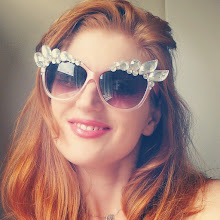I've been reading through my 44
SurveyMonkey responses. Some of the answers have been really thought-provoking. About 80% of people who answered my survey described themselves in general as "informed consumers", which is great - that's pretty much the target market I was looking for. In retrospect I would have not titled the survey as "fashion", because I think a few people answered "no" as they are not informed consumers
of fashion.
Consumers feel strongly about topics across a wide spectrum of issues - political, environmental, religious, culture, technological and social. Some specific issues brought up were: gender equality, gay rights, fair trade, design authenticity, poverty, health, secularism of ethics, "slow" design, renewable resources, sustainable town planning & city building, the banning of smoking in public, support of local & organic produce, anti-animal testing, anti- mass productions, and waste/ landfill ethics. The most prominent issue for my survey responders was environmental sustainability and fair trade. 7% of my responders did not answer the question.
70% of my responders avoid shopping at specific stores or buying specific products because of moral/ ethical issues. Stores include: Max Brenner, Fast Fashion Chains, McDonalds, BP, Woolworths/ Coles, Nike, Starbucks, Gloria Jeans, Cotton On, Nestle, Proctor & Gamble, Zara, Bayer Pharmaceuticals, Shell, City Beach, Mossimo, YD, Amazon and Portmans. Products include: Non-organic skin/ beauty products, products made in China, non-organic foods, non-Australian made products, products which use palm oil, cheap fashion, fur products, products tested on animals, caged eggs, large coffee chains, "adult" products.
Responders said they shop at a huge variety of stores. There were responses rangeing from discount stores like hot dollar, zara, topshop, kmart & supre, chain stores like sportsgirl, portmans, jay jays, witchery and general pants, designerwear like gorman, sass& bide, allanah hill, miu miu, mimco, and some higher fashion stores like chanel, prada and bally. There was also a number of people who said they shopped at local boutiques, and well as online stores like etsy.
Magazines of responders included Frankie, Cleo, Russh, W, Numero, Oyster, Harper's Bazaar, Vogue, Lula, Dazed & Confused, OK, Grazia, Shop Til You Drop, Wallpaper, ID and Madison. Other publications: SMH, Daily Telegraph, BBC online, ABC online, the Australian, Monocle, the Guardian, New York Times online, New Scientist, Reddit, MX, and Sunday magazine. Blogs include: TheyAllHateUS, amandpalmer, showstudio, and design milk blog.
I then tried to gain an understanding of my consumers by looking at the way they make decisions. I separated answers into 4 categories: "humanist", "indecisive", "safe" and "personal". So, for example buying a present for a friend, giftcard would be the "indecisive" option, jewellery would be the "safe" option, something at the oxfam store would be "humanist" and taking her out to lunch would be "personal". In retrospect, I'm not sure these answers worked the way I wanted them to. The response for my movie choice one, for example "
A Comedy because there's an actor in it who was funny in some other movie so you think it'll probably be okay" was my "safe" option, but I'm not sure it really determined attitudes, people may have simply chosen it because they like comedies.
I think the most interesting answers came from my question about definitions of beauty and weather society's ideals match what people's ideals are. Every single person who answered the question (34 responses) said they largely disagreed with societal/ media repsresentations of beauty, or that they were influenced by them and wish they weren't. There were many responses who said they recognised beauty in confidence and personality: "inner beauty", and beauty in people who were unique and different. It is therefore so surprising that media strays so far from consumer demands. It is possible, also, that some people shaped their responses based on social desirability, ie what they "should" say in reponse to such a question. But I think that largely the reponses were truthful.
45% of reponders said they did consider or strongly consider a product to have more monetary value if it is ethical/ sustainable/ fair trade/ funding charities/ protesting against malpractice/ etc. 56% said it did sometimes, and only 7% said it didn't. Examples of products people pay more for are: local food produce, fair trade coffee, free range eggs, oxfam toys, underwear made in Australia, organic products, hand made clothing, lush cosmetics, Trilogy products, organic materials & cotton, authenticity of design, vintage clothes, charity products, and non-mass produced products.
